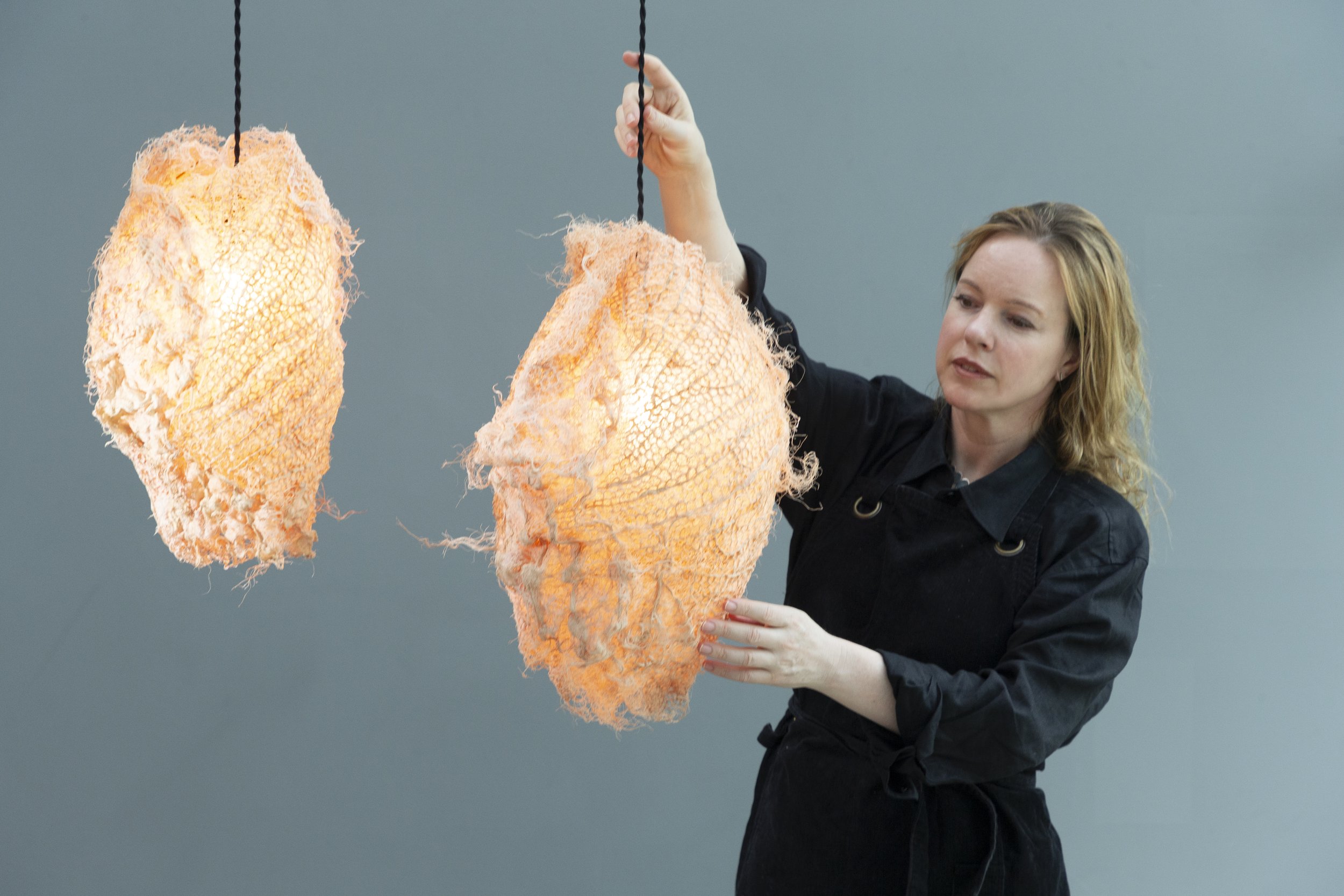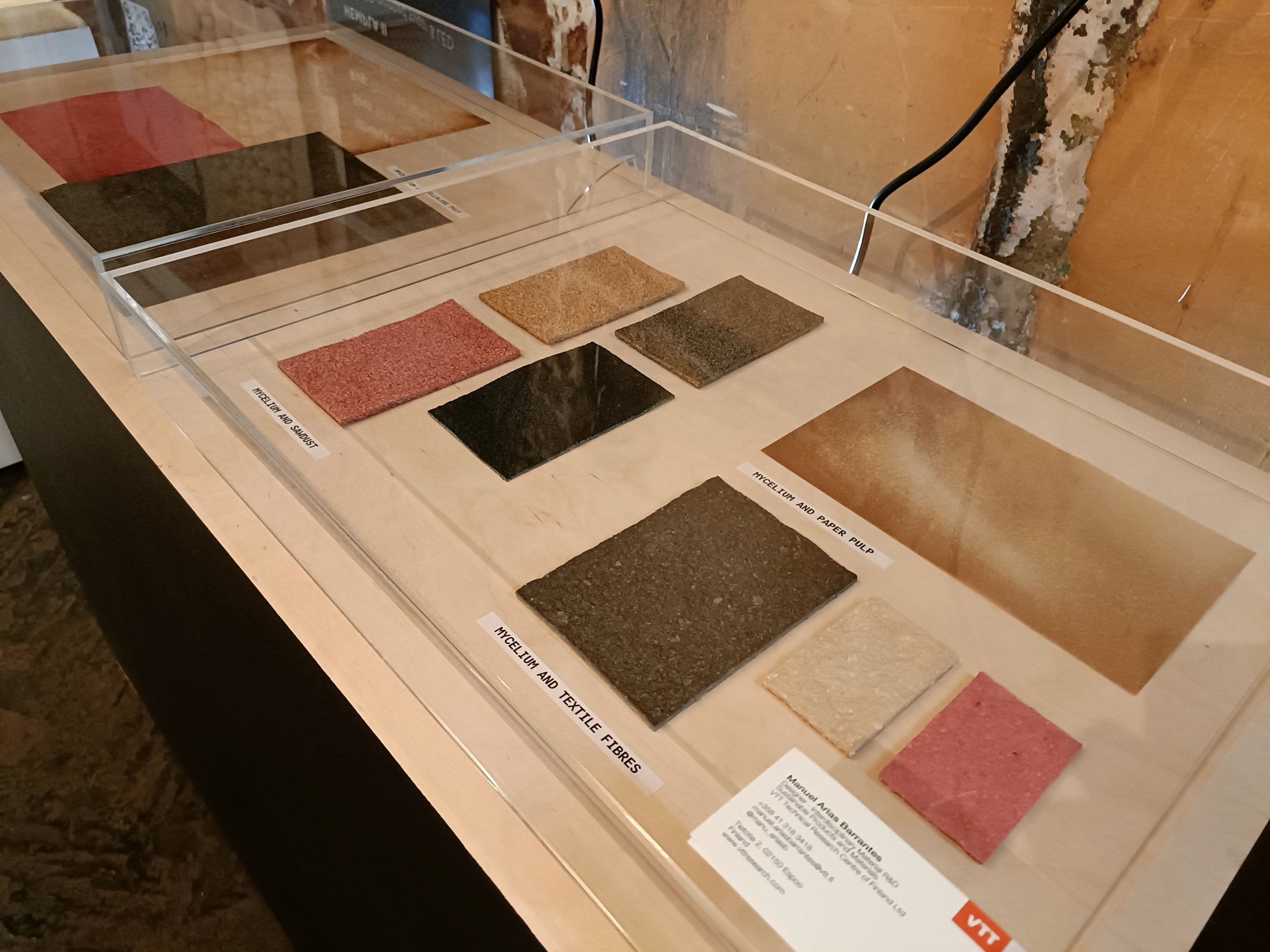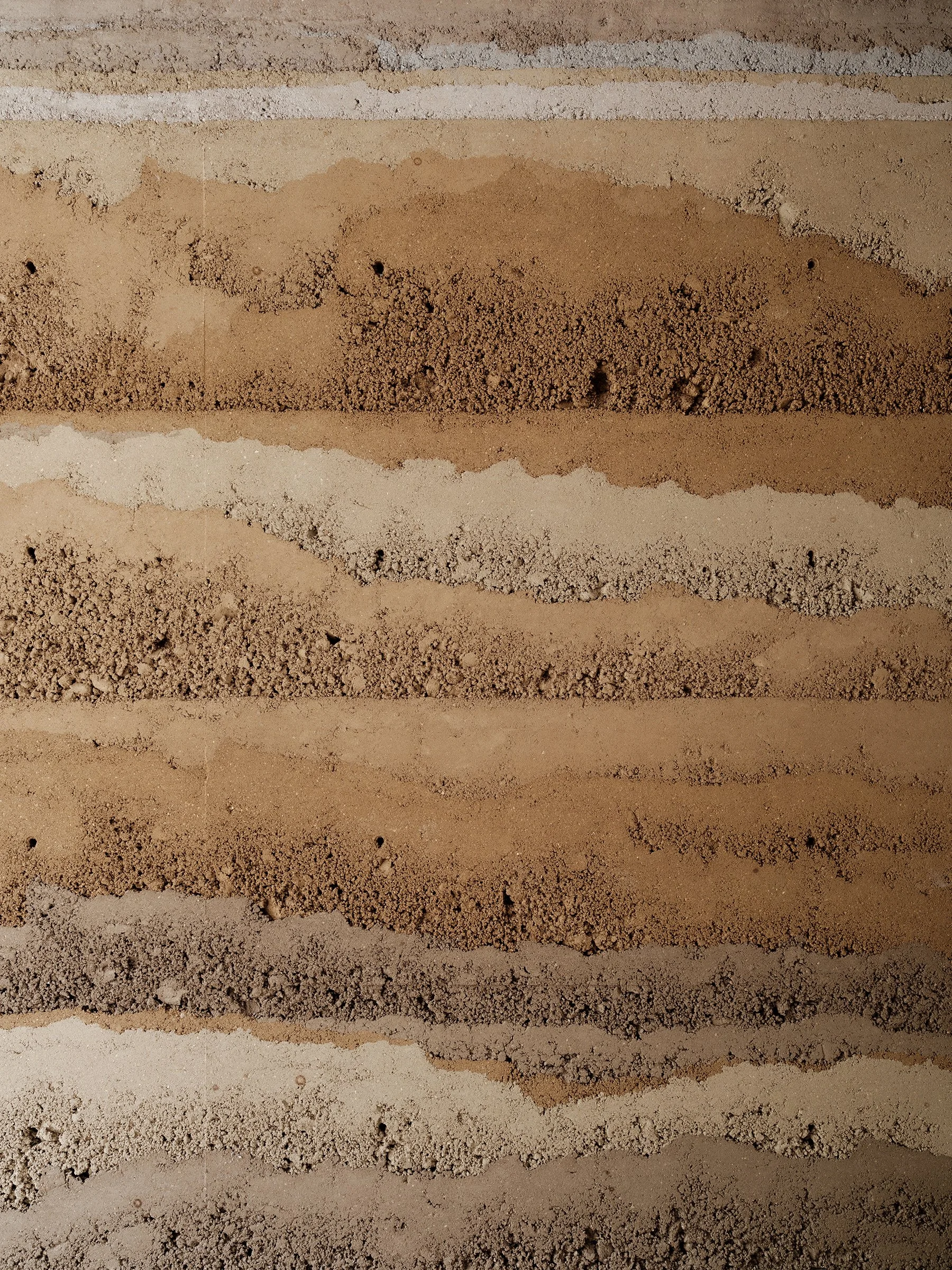Made from Nature at LDF
Following on from our Purposefully Repurposed article, which explored material developments that utilise various forms of waste at the London Design Festival, it’s now time to shine a light on some of the bio-materials spotted amongst the 11 Design Districts and numerous events.
If handled with care and consideration, materials derived from nature are seen as another antidote to the impacts the industry has on the planet, and those who inhabit it. While waste is a seemingly ever-abundant byproduct of manufacturing, working with nature, particularly by tapping into the growing cycles of plants, is not only more energy-efficient but also carbon-capturing.
What better place to start than with a material innovation that quite literally harnesses the growth of plants, in this case, Wheatgrass, to create intricate surfaces and objects? Rootfull is the brainchild of Zena Holloway, and as the name suggests, it’s the subterranean part of the plant being used. Rather appropriately, the backstory of this unique material is not your conventional path into the industry either. Originally an underwater photographer, Zena has always had an affinity with and appreciation for nature and was initially mobilised to make a change when witnessing the devastation caused by plastic waste in the ocean. Having started experimenting with growing mycelium, she had an epiphany moment when spotting the tangled roots of a willow tree in her local river. From here roots became her focus, with the driving question as to whether surfaces could be grown from seed. That was 2018, and now her experiments have developed into an array of sizes, shapes and contexts, all woven by nature. There is of course a collaborative element to the project, with Zena helping to guide the roots with delicately carved beeswax templates into which the roots expand and spread. A celebration of the speed and ingenuity of germination, each beguiling Rootful piece takes only 12 days to germinate, and while low-tech, represents the ultimate in 3D printing.
While traditional leather production is derived from nature and would have previously been slotted into the ‘sustainability’ category by many due to its supposed renewability, the the bigger picture is now widely acknowledged and understood for its negative impacts on animal welfare and the effects of climate change. The aforementioned fungi root system, mycelium, has been growing in popularity (excuse the pun) over the last few years as an adaptable and highly functional bio-based alternative to a number of materials. The team at the state-owned Finnish research institution VTT expresses the company’s mantra of developing “sustainable growth for businesses and society” by using mycelium as an alternative to animal-acquired leather. The material inherently looks and feels like leather, although it can be coloured and patterned, and the company says it can be as strong as the conventional products we’ve become so accustomed to. What’s more, the research team have found ways to overcome the issue of scalability and can produce the fungal mycelium by the metre, as scientist Manuel Arias Barrantes explains, “Until now, increasing the production volume with current methods has been challenging due to mycelium cultivation taking place in a planar two-dimensional form limited in size. Our process makes it possible to overcome these size limitations.”
Another alternative to leather on show at Material Matters came via Malai who specialise in biocomposite materials. Up until now, the team has been producing surfaces composed of bacterial cellulose grown on coconut fibre, which is a byproduct of the food industry. Those surfaces have a papery, leatherlike texture and have the added bonus of water repellency. The new materials on display during the event are the culmination of 15 months of extended research into growing the cellulose without the need for plant fibres. The resulting surfaces are smooth, thin and flexible and offer an equally sustainable option in Malai’s flourishing portfolio of circular materials.
The event is often used as a launchpad for new products and initiatives and Cornish-based Clayworks took the opportunity to showcase their extended rammed earth collection of interior and exterior finishes. Like traditional earth-based constructions, the collection uses monolithic mass, only instead of many tonnes of rammed earth, it is applied in 7-10mm thick layers. Using 100% natural clay, minerals and sand, which can be coloured with natural earth pigments, each layer is laid and compacted by hand. The richly textured surfaces emulate ancient earth architecture and are equally as low carbon in their production. What’s more, the process requires no water, produces very little waste or VOC’s and can even help to regulate humidity and absorb toxins. The collection can be used almost anywhere, and while being made from naturally abundant materials can also be composted ore recycled at the end of its required life cycle.
Matter Forms also launched a new composite material during the show, and one that is made from both natural and waste-based substances. Although on entering the swish UJNG show store in Shoreditch, you’d be forgiven for assuming the exhibition had been incorrectly listed. But, tucked away on the lower floor were samples created from Oyster[Crete], which as the name suggests, use discarded oyster shells to produce an environementally friendly alternative to concrete. It represents the first material in the studio’s portfolio, and is the culmination of 2 years of research and development between Mooka Srisurayotin and her team. The roughly textured surfaces and objects certainly resemble traditional concrete, only with varying sized aggregates of crushed shell peaking through. Alongside the exhibition, Matter Forms also teamed up with zero waste restaurant Silo (who provide the shells) during their showcase of innovative sustainable products made collaboratively with Fibrelab, WA=MA and Re_considered.
This article was first published by Design Insider.





